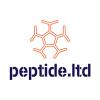Can you explain how this stuff is supposed to work?
I started a writeup on C16 the PKR inhibitor because of its amazing nootropic potential; but, this is just an unfinished rough draft (no time). The mechanism of action of C16 seems to be through GABAa alpha 5 inverse agonism or just a negative modulator with additional increased synaptic transmission through other mechanisms.
You can expand on it if you want:
Elucidating nootropic effects of C16 PKR-Inhibitor
I've been looking at what can be called the most potent nootropic that has been discovered.
The nootropic effects have been analized by the study, "Suppression of PKR Promotes Network Excitability and Enhanced Cognition by Interferon-γ-Mediated Disinhibition" made available by Cell Press.
In the study the authors discuss the nootropic effects of this compound through disinhibition of the GABA pathways,
Discussion
Our data reveal that the lack of a double-stranded RNA-activated protein kinase PKR, originally identified as a sensor of virus infection, unexpectedly leads to hyperexcitability in cortical and hippocampal networks. In addition, L-LTP and behavioral learning are enhanced in Pkr−/− mice or when PKR activity is pharmacologically blocked. The increased excitability in PKR-deficient mice is caused by IFN-γ-mediated disinhibition. Thus, PKR regulates network rhythmicity, synaptic plasticity, and memory storage by potentiating GABAergic synaptic transmission.
So, the authors' findings point at how PKRi causes IFN-γ-mediated disinhibition which in turn inhibits GABAergic synaptic transmission. GABAergic transmission at the hippocampus is responsible for attenuating network rythmicaity, synaptic plasticity, and memory storage (repeating the above).
GABAergic inhibition not only controls the efficacy and plasticity of excitatory synapses, but also promotes the synchronized firing of large assemblies of principal cells at certain preferred frequencies (Mann and Paulsen, 2007). Slow theta and faster gamma oscillations and ripples appear to be crucially involved in mnemonic processes (Buzsaki, 2006 and Maurer and McNaughton, 2007). Multiple lines of evidence support the idea that GABAergic control of synaptic plasticity is a key mechanism of memory storage (Mann and Paulsen, 2007 and Paulsen and Moser, 1998). First, reduced GABAergic-mediated inhibition facilitates the induction of LTP (Abraham et al., 1986, Davies et al., 1991 and Wigström and Gustafsson, 1983). Second, long-term disinhibition of a subset of CA1 pyramidal neurons correlates with the acquisition of spatial memory (Gusev and Alkon, 2001). Third, modest pharmacological reduction of GABAergic transmission enhances memory consolidation (Izquierdo and Medina, 1991 and McGaugh and Roozendaal, 2009). Finally, GABAergic neurons of the medial septum drive theta rhythmicity in the hippocampal network (Hangya et al., 2009).
The authors conclude that the mediation of GABA neurons at the hippocampal area by IFN-γ-mediated disinhibition causes the nootropic effects of C16 or a PKR-Inhibitor.
Our results provide new insight into the function of PKR in the adult brain and how the suppression of PKR promotes network hypersynchrony and enhances L-LTP and cognitive performance. We propose a model in which PKR regulates these processes by IFN-γ-mediated disinhibition. This model is consistent with the following observations. First, IFN-γ increases excitability (Figure 7B) and generates paroxysmal discharges in hippocampal slices by reducing GABA release at inhibitory synapses (Müller et al., 1993). Second, through a pseudoknot in its 5′UTR, IFN-γ mRNA locally activates PKR and eIF2α to inhibit its own translation, but not translation of other mRNAs (Ben-Asouli et al., 2002 and Cohen-Chalamish et al., 2009). Hence, Ifn-γ mRNA translation is enhanced when PKR is genetically or pharmacologically inhibited or when eIF2α phosphorylation is reduced (Ben-Asouli et al., 2002). Accordingly, the levels of IFN-γ were enhanced in the hippocampus (Figure 7A; and possibly also in the amygdala) from Pkr−/− mice. Third, in WT slices, PKRi increases neuronal excitability in a translation-dependent manner (Figures S3G and S5C). Fourth, like Pkr−/− mice, animals with constitutively reduced eIF2α phosphorylation (eIF2α+/S51A mice) showed facilitated L-LTP and LTM (Costa-Mattioli et al., 2007), reduced GABAergic synaptic transmission (Figures S6A and S6B), and EEG synchronous spike discharges (Figures S6C and S6D), supporting the notion that PKR, via the phosphorylation of eIF2α, regulates translation of Ifn-γ mRNA. Fifth, chemically mediated increase in eIF2α phosphorylation blocks L-LTP and LTM in the murine forebrain (Jiang et al., 2010). Sixth, Ifn-γ−/− mice are resistant to both virus- and kainic acid-induced limbic seizures (Getts et al., 2007). Finally, spatial memory is enhanced in transgenic mice overexpressing small amounts of IFN-γ (Baron et al., 2008). Thus, our observations show that PKR and IFN-γ—both crucial components of the antiviral and inflammatory response ( Farrar and Schreiber, 1993 and García et al., 2007) —play an important role in activity-dependent changes in synaptic strength and network rhythmicity in the adult brain.
So, it seems that C16 not only works on GABAa alpha 5 as an inverse agonist or negative modulation; but, also has other mechanisms of action that facilitate LTP formation and increased EEG synchronous spike charges. More later.
Edited by yadayada, 30 May 2013 - 04:57 PM.
 C16 - Copy.jpg 190.55KB
199 downloads
C16 - Copy.jpg 190.55KB
199 downloads
















































